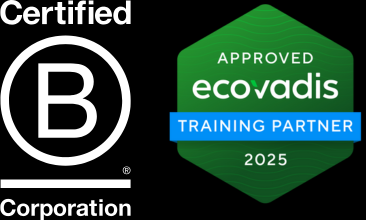The aim of this guide is to help small and medium-sized companies (SMEs) improve their corporate sustainability and responsibility in the environmental, social and governance (ESG) fields in practice. With the development of the ESG market, legislative updates and changes in the expectations of customers, partners and investors, the field of sustainability plays an increasingly important role in building a strong and competitive business.
Having gathered information on ESG material topics in part 5 of our guide, it's time to move to your ESG goals and indicators in part 6. This step is about defining realistic objectives for your business and finding ways to achieve these goals, making sure they align with both your company's needs and your stakeholders' interests.
Setting your ESG goals and indicators
After measuring your baseline performance on all of your material topics, you can begin setting realistic long and short-term goals for each. Tools such as those provided by the Science-Based Targets Initiative (SBTi) and the UN Principle of Responsible Business for the financial sector can help you set goals.
Your ESG goals should be integrated into your overall business strategy and be approved by your top management. Only genuine buy-in from your Board and senior management will ensure that you fully reap the benefits of your ESG strategy. You must find the synergies between your business goals and your ESG goals. For example, cutting operational costs goes hand in hand with energy efficiency, and caring for your local community can be vital to becoming a preferred provider.
Aside from being realistic and integrated into your core business strategy, your goals must also be measurable so that you can track your progress. You can measure progress towards your goals with standardised indicators, such as those provided by ESRS, GRI or other frameworks. Below are some examples of setting ESG goals corresponding to your material topics.
Examples of ESG material topics and goals

Next, in part 7, we'll look at strategy implementation and communication of ESG. This will be about putting your ESG strategy into action and effectively communicating it within and outside your organization.

